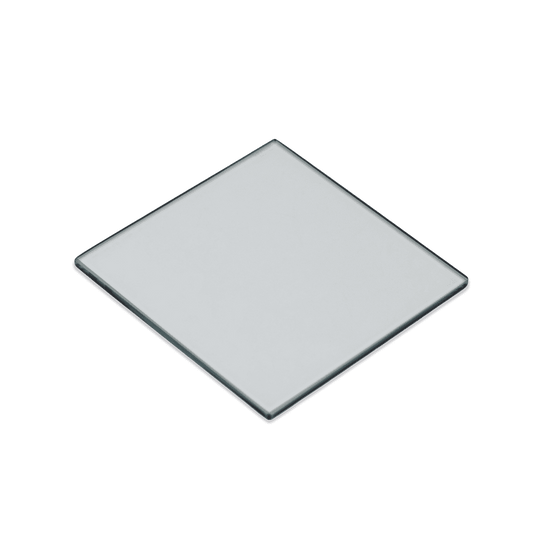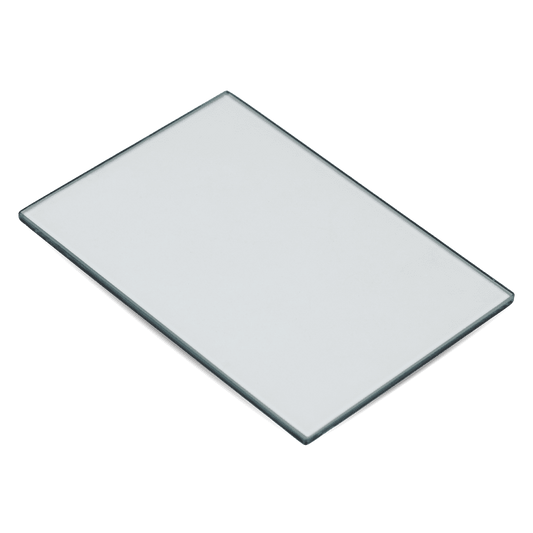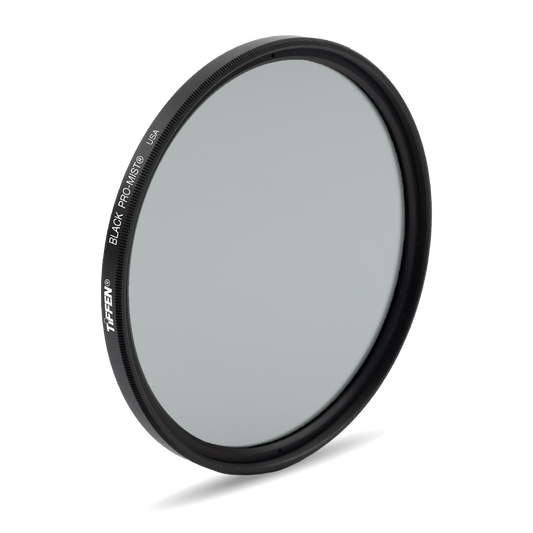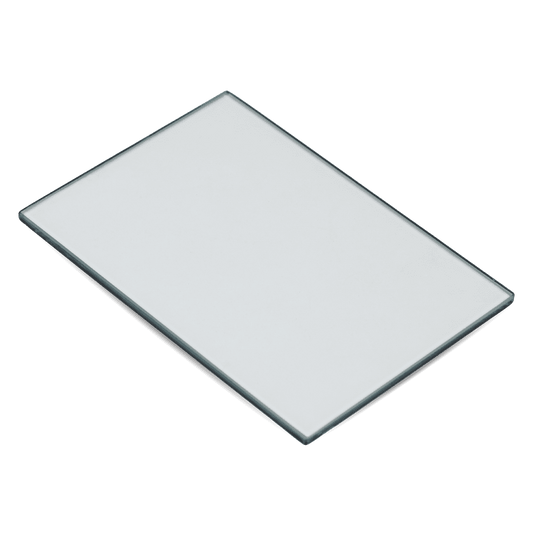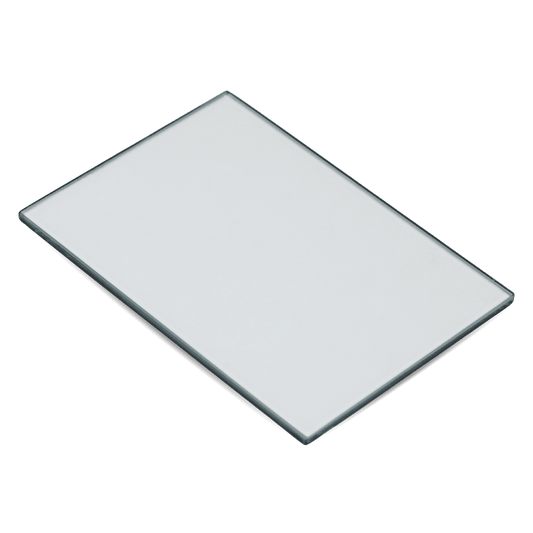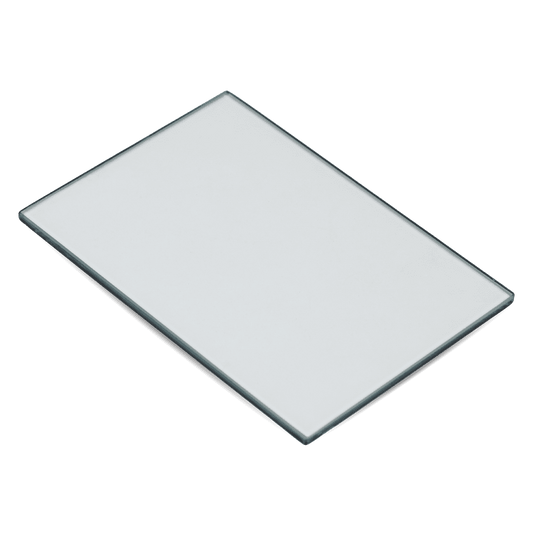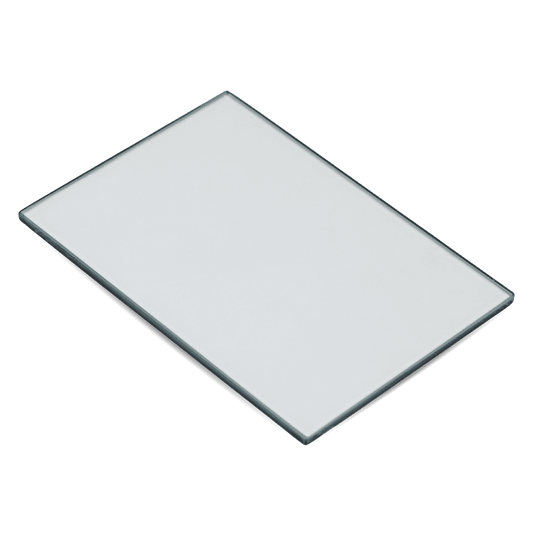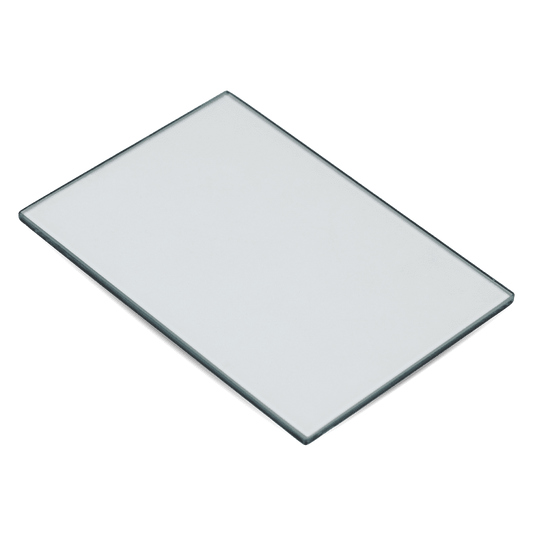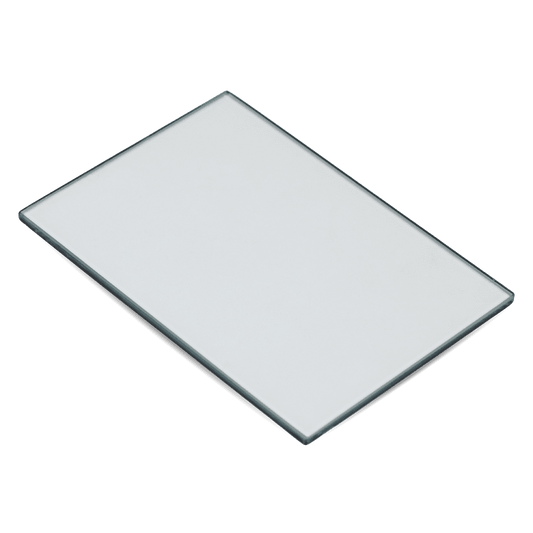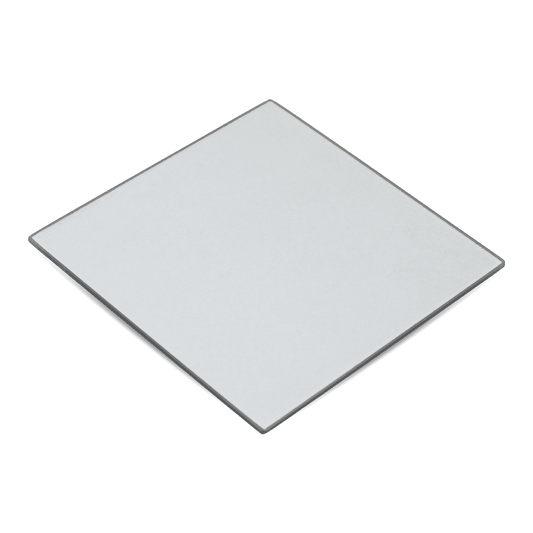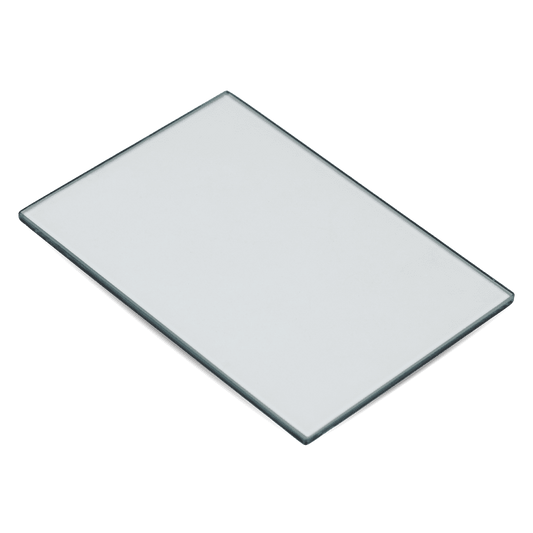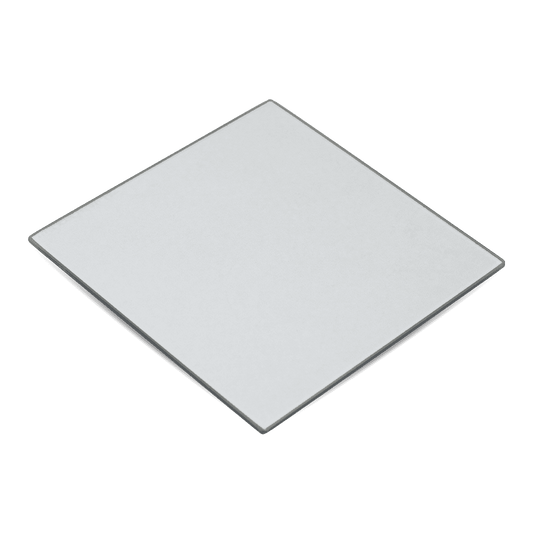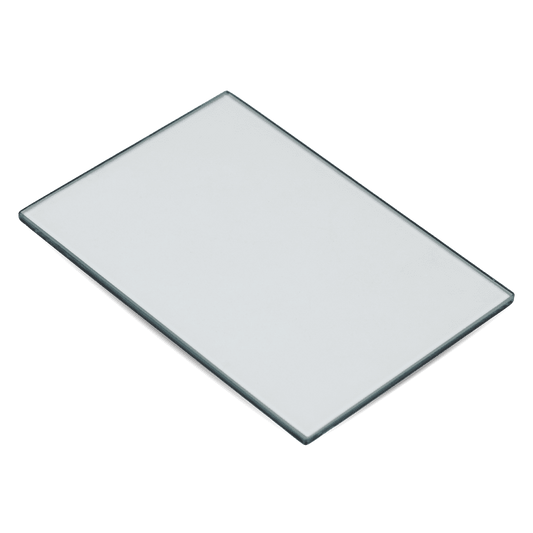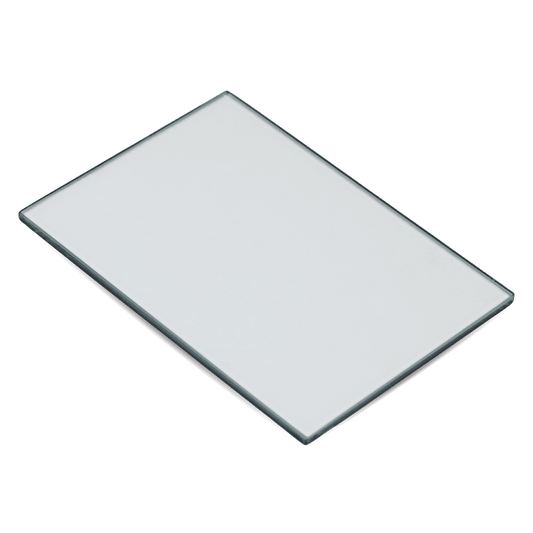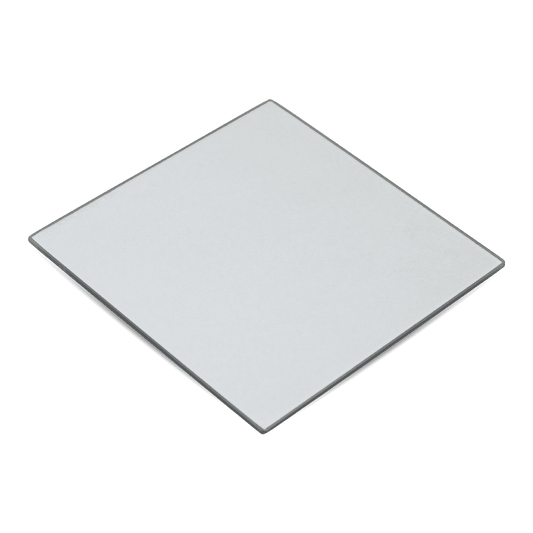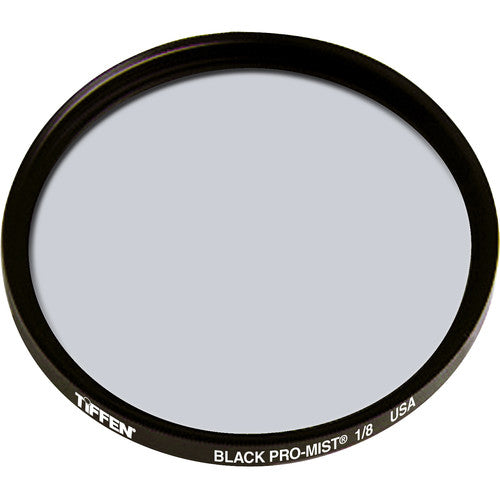WHY USE DIFFUSION FILTERS?
Diffusion filters have been helping cinematographers create their look for generations. These filters can be used for reducing blemishes and wrinkles on talent by reducing the resolution of the image. They can also be used for lifting contrast and also creating halation, or glowing effects to specular light sources in a scene. These filters have been a staple in Hollywood for generations and continue to help cinematographers create the look they want, in camera.
Click the corresponding categories below to learn more:
White Halation Diffusion
- Glimmerglass
- Pearlescent
- Pro-Mist
- Satin
Glimmerglass is a line of diffusion filters that produces a soft clean halation around practical and specular light sources, while keeping an apparent sharpness on the overall image. On close ups, the apparent sharpness and fine detail is kept as the effect of the filter lowers contrast while softly rolling into the shadow area. This low contrast affect moderately mutes bright colors. This makes the lower end of the glimmer glass diffusion line produce a non-destructive or invasive look.
Even at heavier densities, the filter never becomes overly powerful in its spread of halation. The Glimmerglass series of filters also has a benefit of sparkling when viewed, which can add reassurance to your talent when shooting beauty; that way you can fully concentrate on the look of your shot.
This line of filters have been designed to create sharp images produced by today’s high resolution cameras and lenses. Even at its lowest strength of 1/8, the components that go into making up a pearlescent get to work on producing a lush, velvety look to the images.
The rich, lush and glamorous look of a pearlescent takes effect cleaning out the fine detail in the skin, while an apparent sharpness remains in the eyes. It is also worth noting that the halation effect on the Caucasian skin tone is more apparent than on the African American skin tone. However the end result on both skin tones in the close ups is a pleasing, beautiful skin complexion.
Pro-Mist filters still continue to give today’s cinematographer, using modern cameras, a beautiful and effective look. Offering a timeless glow, along with its darker version, black pro mist, remains in the minds of many cinematographers as the de facto fusion reference. When one comes to considering adding diffusion to an image, the pro mist range of filters is as at home on film as well as digital cameras. It’s halation is more prominent than pearlescent, which is easily seen in the practical and specular light sources.
In the stronger densities it is clearly apparent how the Pro-Mist diffuse effect reduces the skin tone shimmer, clearly diluting both skin tone values.
Our Satin range of filters offers agreeable spill of halation across the filter sets densities, never overpowering the image. This effect, combined with a subtle resolution effect, makes this set of filters effective on two fronts. The look of Satin is simple and understated, producing a delicate look of a not too overly filtered image. This is evident in the control of fine detail information, where the Satin keeps eyes and hair sharp in the close ups, with a delicate reduction in contrast. By keeping a watchful eye on the halation in wide shots, you will see that it never increases keeping a constant background atmosphere. As you will notice, the fine detail resolution becomes ever so slightly softer, without ever breaking up the image. This combination delivers new levels of consistency and control to cinematographers wishing to influence the look of modern lenses.
Black Halation Diffusion
- Black Diffusion FX
- Black Net
- Black Pro-Mist
- Black Satin
- Black Pearlescent
- Black Glimmerglass
Black Diffusion/FX, is a distinctive yet simple diffusion filter, as it is refined in its ability to reduce fine sharp detail and produce a minimal effect on bounced and reduced highlights. The Black Diffusion/FX look, is apparent by its seemingly non-destructive effect, meaning that any reduction in color saturation is kept to a minimum. When used on close ups, facial features, such as eyes and hair remain sharp on the focal plane while finer and unwanted skin detail smoothly blends away.
Black Diffusion is kept in check by what is embedded in the filter, performing the jewel role in controlling the optical softening element form overly blurring specular highlights, which might otherwise cause stronger halation.
The distinctive look of Black Net is that of a classical softening in that it has minimal halation. Care is required when using any front mounted net as the weave may become apparent, if shot under specific circumstances, these being wide focal lengths with a wide iris setting. Other side effects may include light sources that become caught or dragged when the camera is panned or moved. In this wide angle image the practical light is showing signs of irregular flair. This aside, the look is still special, even if you only get to use it when shooting still images.
It is easy to see why the Black Pro-Mists have been such a success for over the past 30 or so years. Its unique layering of contrast combined with a gauzy paint like halation, function as a twist on the stand of the pro halation spill effect. Even at its lowest density, it delivers an effective and increase in the halation which adds a pleasing depth of warmth, but is not transported to the skin tone values. These characteristics will become more apparent when you use densities of 1 quarter and above.
In the heavier densities the spill is quite aggressive from the practical light, with the warm tone becoming more apparent. Yet the subtle but effective look still continues to make the pro mist filter a staple filter for many cinematographers in the digital world.
Our Black Satin range of filters offer the cinematographer two main benefits when using modern camera sensor technology and lenses. An agreeable sense of halation across the densities, never overpowering the image, combined with a subtle resolution reduction element, makes this set of filters effective on two fronts. The look of Black Satin is simple and understated, producing a rounded delicate vailed atmosphere of a not too overly filtered image. This is evident in the control of fine detail formation, where the black satins keep eyes and hair sharp in the close ups. With a delicate reduction and contrast, by keeping a watchful eye on the halation you will see this never increases. However it does deliver warmth to the halation, thus maintaining constant warmth to the atmosphere. With each densities increase, the fine detail resolution is softer without ever breaking up the image. This combination delivers new levels of consistency and control to cinematographers wishing to influence the look of modern lenses.
Tiffen’s Black Pearlescent® filters aid cinematographers in taking the edge off the image from modern digital lenses and cameras, especially with 4K acquisition sensors — specifically in mind to enhance the natural beauty of the shot. Black Pearlescent filters offer all of the benefits of the original Pearlescent filters, while adding a slightly reduced halo effect on spectacular highlights, and gently softening the overall image with a smooth glow. Today’s increased in-camera sharpness and contrast can sometimes show intense detail, and it’s here where the Black Pearlescent filter’s look comes into its own.
Responding to the demands of cinematographers, Tiffen’s new Black Glimmerglass® filters aid cinematographers in taking the hard crisp edge off the images that modern digital lenses and cameras can produce, especially with 4K sensors, and are designed to enhance the natural beauty of the shot with minimal signs of filtration. Black Glimmerglass filters offer all of the benefits of the original Glimmerglass filters, PLUS, they subtly remove harsh sharpness from modern lenses, adding a pleasing overall blending to contrast levels. Additionally, these filters maintain a clear, overall in-focus image, offering a filmic aura to digital acquisition.
Warm Halation Diffusion
- Bronze Glimmerglass
- Gold Diffusion FX
- Warm Black Pro-Mist
- Warm Pro-Mist
Bronze Glimmerglass is much more subtle than the name might suggest at first, providing a clean warm halation around partial and specular light sources. The Bronze Glimmerglass is like a regular Glimmerglass, understated and refined in its delivery of glitter. By adding a warm hug, not redden to the skin tone, and keeping the images apparent sharpness intact, the effect of this glimmered tonal warmth adds a dimension into the new shadow area on both skin tone types. Blending shadows on the dark skin tone, like makeup foundation, and on the white skin tone, blending out unwanted red blemishes. It is worth noting that the overall effect of BGG will also mute all colors with the effect that the diffusion creates.
Gold Diffusion/FX offers an optical softness helping reduce the sharpness associated with today’s modern lens. As it introduces a golden warmth that wraps itself around the image, this filter produces a slight reduction in contrast, creating a very pleasing effect on darker skin tones. Practical light sources and skin shine seemly unduly moved by the filters reduction until the heavier densities are introduced.
As with all Diffusion/FX range facial features, like eyes, are given an apparent sharpness, giving a very pleasing look to beauty shots. The lowering of contrast changes the shadow area without producing a halation from specular or practical light sources. Until we get to the very heavy end of the range, even then its affect is refined and un-invasive. One can also see the filters added warmth in the gray scale in the wide shot.
Warm Black Pro-Mist, when initially viewed in this section of the film seems to introduce an alarming red warm hue to the image. However, as your eyes adjust to this look, one begins to feel that the original unfiltered image on the left hand side of the screen is unduly cool. This affect is the byproduct of our brains compensating for the warmth of the image we are most concentrating on. We also notice how both skin tones used in this test seemed to benefit from this added warmth, either by the added warmth introduced into the shadow area or by how the skin tone detail is smoothed out by the diffusions added warmth.
By infusing the halation’s dispersion of added warmth, a rich glow is produced which is kept in check by the filters black element, as it controls the level of contrast and spill. This result is considered by some to have a more pleasing effect on darker skin tones, where otherwise the standard black pro mist may be considered too flat.
Warm Pro-Mist, in comparison to Warm Black Pro-Mist, delivers a dreamer warmth to the image. The warmth is distributed evenly without the interference of the black element, clearly seen in how the halation responds to the practical light source. Compared to the warm black pro mist, this cleaner warmer lower contrast of spill is stronger on lighter skin tones, but is absorbed to give a pleasing effect on darker skin tones, without so much apparent halation. The added warmth in our diffusion lines is an important factor to consider if your control of lighting in a specific environment or equipment is limited when shooting darker skin tones, as the added warmth of warm diffusers is evident to see.
Optical Resolution Diffusion
- Digital Diffusion FX
- Soft FX
Digital Diffusion/FX introduces a slight reduction in contrast across its range. However, this very fine optical filter does not introduce a halation affect, this is because the acid etching in the glass is an extremely delicate way to bend light across the surface of an image. It also reduces stray lights ability to scatter or cause halation, which is commonly associated with the elements enclosed in a mist type filter. The subtleness of this process means that the color chart is not unduly washed out. Where the filter really gets to work is on fine detail resolution , such as wrinkles and fine lines on the skin. It also doesn’t overpower the overall image, giving an out of focus look. Maintaining an apparent sharpness. This means that even stronger densities could be used without the look of the filter, without overpowering the final result.
Soft/FX uses a different approach for dealing with how it reduces the sharpness and resolution of an image. This is by dispensing many different strengths of oval lenslets within the laminated glass. The resulting image is affected in a slightly different way to how the acid etching of a digital diffusion filter works. Due to the size in which the internal lens can be produced, the light that is bent on these internal lenses is bent on an overall effect of the image. Therefore the softness is more widely spread over the image, meaning the resolution is reduced to a greater degree at a lower density. The physical effect of this process also means that the spread of bent light form the lenslets in the heavier densities produces a slight halation around the practical and specular light sources as well.
Black Resolution Diffusion
- Black Soft FX
Tiffen’s new Black Soft/FX® filters aid cinematographers in taking the edge off the image from modern digital lenses and cameras, especially with 4K acquisition sensors — specifically to enhance the natural beauty of the shot with minimal signs of filtration. Black Soft/FX filters offer all of the benefits of the original Soft/FX® filters, PLUS, these filters produce a continuous softening effect with increasing atmospheric haze. Additionally, these filter elements maintain a clear, overall in-focus image, offering a filmic aura to digital acquisition.
Warm Resolution Diffusion
- Warm Soft FX
The warm element introduced in the Warm Soft/FX, is at a constant 812 density as with the Black Pro-Mist and the Warm Pro-Mist. And the Warm Soft/FX uses the same filtering index as the original Soft/FX set. Therefore it spreads and bends light in exactly the same manner. It is the introduction of the warm 812 element that adds to the skin tones and in the heavier densities as warmth to the glow form the practical lighting shot. The design concept behind all three of the warm diffusion filters is to enhance the beauty of the filters even unflattering lighting environments, highlighting skin tones.
Resolution and Contrast Reduction
- HDTV FX
- Ultra Contrast
- Low Contrast
The HDTV range of FX filters produces a very inconspicuous effect on the images as it works on reducing both contrast and resolution. The contrast reduction constituent cayuses no flare from practical or specular highlights .Though mute, the overall color intensity of the image, while the resolution element of the filter does not over glare the image, keeping what seems an apparent sharpness in all the important places. For example, the outline of oval objects and the face, eyes and lips. One might say that it just looks like a slightly older lens is being used.
Controlling contrast is difficult in bright sunlit exteriors. Exposing for either highlights or shadows will leave the other severely under-or over-exposed. Tiffen was recognized with a Technical Achievement Award from the Academy of Motion Picture Arts & Sciences for the innovative design of this popular Motion Picture and TV filter. It uses the surrounding ambient light, not just light in the image area, to evenly lighten shadows throughout. Use it where contrast control is needed without any other effect on sharpness or highlight flare being apparent.
Controlling contrast is difficult in bright sunlit exteriors. Exposing for either highlights or shadows will leave the other severely under-or over-exposed. Low Contrast filters create a small amount of “localized” flare near highlight areas within the image. This reduces contrast by lightening nearby shadow areas, leaving highlights almost unchanged.
Atmosphere
- Smoque
- Fog
- Double Fog
- Black Fog
- Night Fog
The Tiffen Smoque filter is a true design of filtration magic created to add atmospheric ambiance to a scene.This simple yet effective filter should not be underestimated, as much of our cinematographic viewing memory is wrapped up in deep rich smoke filled environments. To create this kind of effect in an environment one simply has to reach for a Smoque filter, rather than having to wait for the effects team.
The Tiffen Fog Filter simulates the effects of natural fog or mist by creating a soft glow around highlights and lowering the overall contrast of the scene. There can also be a softening effect due to how the light interacts with the subject matter. Provides a fog-like effect with glowing highlights and lowered overall contrast.
Tiffen Double Fog filters have milder flare and softening characteristics than standard Fog filters while exhibiting a much greater effect on contrast, especially in the stronger grades. A very thick natural fog will still allow close-up objects to appear sharp. So will a Double Fog filter. The key to the effect is the much lower contrast combined with a minimal amount of highlight flare.
New Black Fog filters provide an overall atmospheric softening that creates a smooth wide flare from the highlights yet keeps the blacks, black without overly muting colors or losing detail in shadows.
New Night Fog filters yield a natural fog effect with overall atmospheric softening and wide flare, coupled with unique contrast reduction technology that reduces highlights without darkening shadows.
-
4 x 4" Black Pro-Mist® Filter
Regular price $ 350.00 USDRegular priceUnit price per$ 0.00 USDSale price $ 350.00 USD -
4 x 5.650" Black Pro-Mist® Filter
Regular price $ 565.00 USDRegular priceUnit price per$ 0.00 USDSale price $ 565.00 USD -
Black Pro-Mist Filter®
Regular price From $ 65.00 USDRegular priceUnit price per -
4 x 5.650" Black Diffusion FX Filter
Regular price $ 565.00 USDRegular priceUnit price per$ 0.00 USDSale price $ 565.00 USD -
Black Glimmerglass® Camera Filters
Regular price From $ 565.00 USDRegular priceUnit price per$ 0.00 USDSale price From $ 565.00 USD -
Pearlescent Filter
Regular price From $ 350.00 USDRegular priceUnit price per$ 0.00 USDSale price From $ 350.00 USD -
4 x 5.650" Black Pearlescent Filter
Regular price $ 565.00 USDRegular priceUnit price per$ 0.00 USDSale price $ 565.00 USD -
4 x 5.650" Black Satin Filter
Regular price $ 565.00 USDRegular priceUnit price per$ 0.00 USDSale price $ 565.00 USD -
4 x 5.650" Glimmerglass Filter
Regular price $ 565.00 USDRegular priceUnit price per$ 0.00 USDSale price $ 565.00 USD -
6.6 x 6.6" Glimmerglass Filter
Regular price $ 725.00 USDRegular priceUnit price per$ 0.00 USDSale price $ 725.00 USD -
4 x 5.650" Pro-Mist Filter
Regular price From $ 226.00 USDRegular priceUnit price per$ 565.00 USDSale price From $ 226.00 USDSale -
6.6 x 6.6" Pro-Mist Filter
Regular price From $ 435.00 USDRegular priceUnit price per$ 725.00 USDSale price From $ 435.00 USDSale -
4 x 5.650" Smoque Filter
Regular price $ 595.00 USDRegular priceUnit price per$ 0.00 USDSale price $ 595.00 USD -
4 x 5.650" Soft FX Filter
Regular price From $ 199.99 USDRegular priceUnit price per$ 565.00 USDSale price From $ 199.99 USDSale -
6.6 x 6.6" Soft FX Filter
Regular price $ 725.00 USDRegular priceUnit price per$ 725.00 USDSale price $ 725.00 USD -
Black Pro-Mist® Filter Wheel
Regular price $ 280.00 USDRegular priceUnit price per$ 0.00 USDSale price $ 280.00 USD

